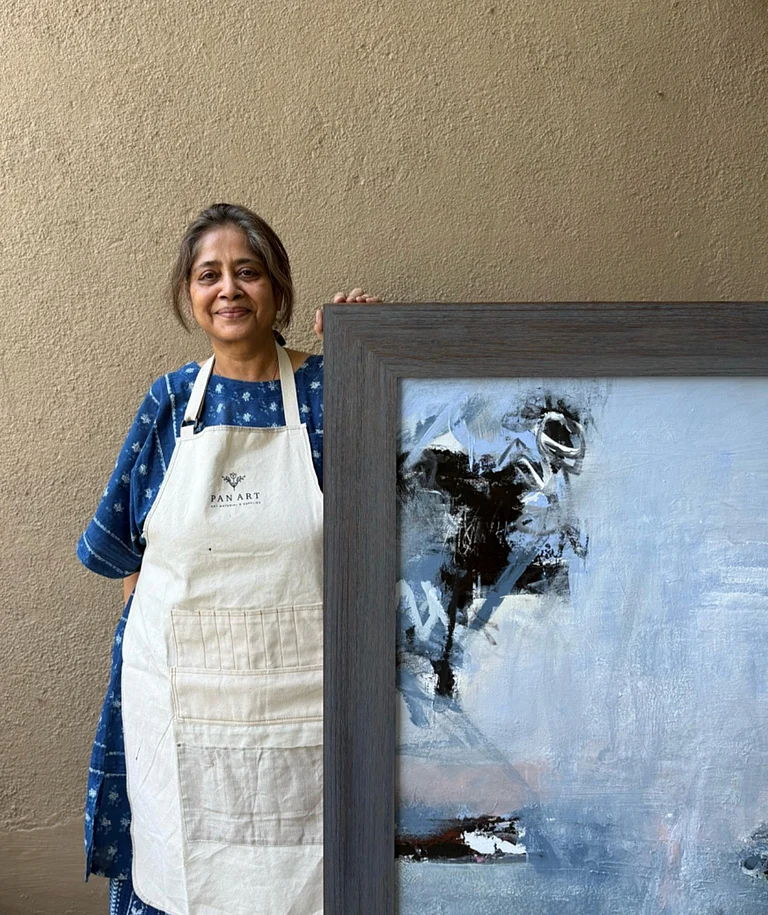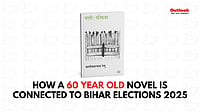
Corporate India is filled with hidden artists who silence their creative selves to appear more professional.
Reclaiming art in the workplace restores humanity, deepens connection, and enriches leadership.
When people are allowed to bring their whole selves to work, productivity becomes purpose, and work begins to feel like life again.
The richest part of who we are is often the part we keep unseen at work.
Over time, I’ve come to think of this as one of the quietest losses of professional life. Each morning, we enter our offices like well-rehearsed actors, polished, punctual, and properly masked. Beneath the calm of meetings and dashboards lies another life entirely: sketchbooks tucked away in drawers, half-written verses forgotten in phone notes, instruments that haven’t been touched in years. The selves we once promised we’d never abandon slowly fall silent under fluorescent lights.
Lately, my messages and inboxes no longer bring only approvals, targets, or timelines. They bring confessions, from people I once worked alongside, who now admit they paint at midnight, write when everyone’s asleep, or still dream of playing music again.
I spent over ten years moving through four organisations, surrounded by remarkable professionals. And yet, I never knew I was sitting beside poets, singers, painters, storytellers. Our conversations remained confined to reports, budgets, and strategy decks. I never thought to ask what stirred their hearts. Nor did I reveal what quietly stirred mine, that I spent my weekends sketching, writing, and building a small, private world of words and colour.
For years, I kept that part of me hidden, afraid it might blur the seriousness I had worked so hard to project. Corporate life demands composure, not vulnerability. I worried that talking about poetry or painting would make me seem less ambitious, less dependable, less suited to leadership.
That fear, I’ve learned, is not mine alone. It belongs to a generation raised to believe that productivity is purpose, and that art belongs to evenings and holidays. Yet, in a strange twist, the very skills that once defined our worth, speed, precision, efficiency, are now being handed over to machines. What can never be coded, though, is what makes us human: imagination, compassion, and the quiet desire to create.
The Unseen Canvas
A few months ago, at a business conference in Gurgaon, I ran into an old colleague. She had once led a team of nearly a hundred people and was known for her near-military punctuality. “I’ve started sculpting again,” she said, her voice carrying both excitement and apology. “Clay and stone… it feels like touching time itself.”
That line stayed with me. Touching time itself. For years, she had shaped people and projects. Now, she shaped silence into form.
Another former teammate, now in Singapore, confessed over a late-night call that he writes Urdu poetry, ghazals about lost friendships and the loneliness of airports. He performs them anonymously on social media. His colleagues don’t know. “If they did,” he said with a laugh, “they’d think I’ve lost focus.”
In truth, perhaps he’s found it.
These secret lives, of bankers who write, consultants who sing, or coders who paint, are everywhere. But the workplace rarely knows how to make space for them. We celebrate innovation, but fear imagination. We speak of “thinking outside the box,” yet punish anything that doesn’t fit the box’s boundaries.
A Room with a View
I often imagine what it would be like if office spaces allowed art to breathe in the same air as business. If a meeting room also had an easel. If a board discussion began with a poem instead of a PowerPoint.
Years ago, during an offsite in Pune, our CFO, known for his sharpness and silence, took out a violin after dinner. Nobody knew he could play. As the night deepened, he played a slow, wistful tune, and for once the team didn’t talk about numbers. We just listened. It felt like we were seeing the person behind the title for the first time.
Afterward, he told me softly, “I used to play in college. Then life became a series of deadlines.”
That line could be a metaphor for so many of us. Life as a series of deadlines. What a waste of the infinite.
When Work Forgot Wonder
There’s a sterility that creeps into professional spaces when art leaves the room. Without wonder, everything begins to look the same, presentations, meetings, even ambitions. What once felt meaningful turns mechanical.
Art, in its simplest sense, restores wonder. It reminds us that even the most ordinary life can hold beauty and depth. It gives us back our humanity, one line, one brushstroke, one note at a time.
In this sense, creativity doesn’t compete with professionalism, it completes it. The finest professionals I’ve known weren’t the most efficient ones; they were the most alive. They led not by rulebooks but by resonance.
Krishen Khanna, who turned a hundred this year, once worked as a banker before becoming one of India’s greatest painters. Ram Kumar, too, left his banking job to follow the pull of colour and canvas. They remind us that work and art are not opposites; they are different languages for the same human urge, to make meaning.
Revealing the Hidden Self
A friend of mine, an HR head at a large firm, recently started an internal poetry circle. She told me, “It’s the only meeting where people don’t compete to speak.” Each month, employees gather to read what they’ve written, sometimes clumsy, sometimes beautiful, always honest.
It has changed something subtle in their culture. Conversations are gentler now. People listen longer. A few even claim productivity has improved, though that was never the point.
Maybe that’s what our workplaces truly need, not just motivation, but meaning. Not just recognition, but resonance.
A Different Kind of Growth
We speak endlessly of “growth” in corporate life, growth of revenue, reach, and influence. But what about inner growth? What about the ability to still feel awe, to still care about something that can’t be monetised?
One can be ambitious and artistic, driven and dreamy. They aren’t contradictions; they are complements. The imagination that writes a poem can also reimagine a business model. The mind that paints can also perceive patterns others miss.
Some of the best leaders, I’ve noticed, are secret readers and thinkers of art. They bring empathy to decision-making, rhythm to teamwork, and colour to the grey language of management.
The Quiet Return
Not long ago, I received a message from a former boss, an old-school professional known for his formality. He wrote: “I’ve begun writing short stories again. Haven’t shown anyone yet.”
It made me smile. Perhaps the world hasn’t changed as much as we think; perhaps it’s just rediscovering itself, quietly, one story at a time.
Somewhere right now, in a cubicle or a corner office, someone is sketching on a scrap of paper between calls. Someone else is writing lines they’ll never post online. Other hums an old tune softly, afraid to be heard.
They aren’t rebelling. They are remembering.
Because art was never outside work, it was always inside us, waiting patiently to be welcomed back. And maybe, when we finally allow it in, our work will begin to look a little more like life itself.
(Ashutosh Kumar Thakur is a management professional, literary critic, and curator based in Bangalore.)




























